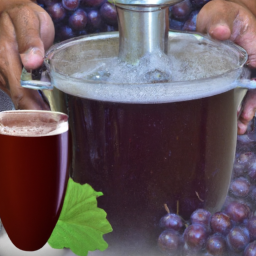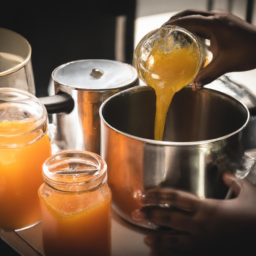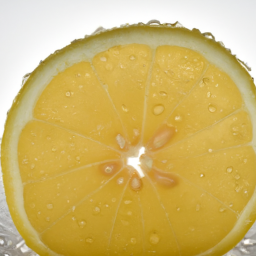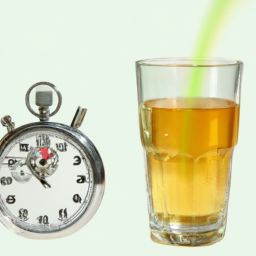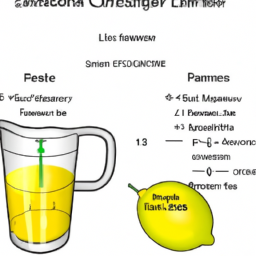Can you believe that grapes have been crowned as one of the most popular fruits worldwide? The Food and Agriculture Organization of the United Nations reveals that over 75 million tonnes of these delicious fruits are produced annually.
With such a high demand for this delicious fruit, it’s no surprise that grape juice is a popular beverage choice for many. But what if you could enjoy the taste of fresh grape juice all year round, even when grapes are out of season? That’s where canning comes in.
In this article, I will guide you through the steps of canning grape juice so that you can enjoy this refreshing drink even in the depths of winter. From selecting the right grapes to filling and sealing the jars, I will provide you with a systematic and practical approach to the canning process.
So, whether you have an abundance of grapes from your garden or you simply love the taste of fresh grape juice, read on to learn how to can grape juice like a pro.
Key Takeaways
- Select sweet and flavorful grapes such as Concord, Catawba, and Muscadine grapes.
- Harvest grapes at peak ripeness and clean them thoroughly before crushing.
- Strain juice to remove seeds and skins, and add sweetness to taste.
- Properly store canned grape juice for up to a year and prioritize safety when canning.
Selecting the Right Grapes
Picking the perfect grape is crucial for achieving a sweet and flavorful juice that will tantalize your taste buds. When selecting grapes for juicing, it’s important to choose varieties that are best suited for making juice. Some grape varieties that are ideal for juicing include Concord, Catawba, and Muscadine grapes.
In addition to choosing the right varieties, using proper harvesting techniques is also important. Grapes should be harvested at their peak ripeness, which is usually when they’re plump, firm, and free from blemishes. It’s also best to harvest grapes early in the morning when they’re cool to the touch. This will help to preserve their flavor and sweetness.
With the right varieties and harvesting techniques, you can ensure that your grape juice will be delicious and satisfying.
Now, let’s move on to the next step of preparation.
Preparation
Now that you’ve got everything ready, it’s time to start crushing those sweet grapes and getting them ready for the canning process.
First things first, you need to clean the grapes thoroughly. I recommend using cold water to rinse the grapes and then letting them soak in a mixture of water and white vinegar for a few minutes to ensure that any dirt or debris is removed.
Once you’ve finished cleaning the grapes, it’s time to remove the stems. This can be done by either using your hands or a pair of scissors. Simply grab the stem and pull or snip it off, making sure not to damage the grape itself.
After the grapes have been cleaned and de-stemmed, it’s time to crush them. This can be done in a variety of ways, such as using a potato masher, a blender, or a specialized grape crusher. The goal is to break down the grapes into a pulp-like consistency.
Once the grapes have been crushed, it’s time to strain them to remove any seeds or skins that may be present. This can be done using a fine mesh strainer or cheesecloth.
With the grape juice now ready, we can move on to the next step of making grape juice.
Making Grape Juice
Let’s get started on creating a delicious beverage by transforming our freshly crushed grapes into a refreshing drink. Making grape juice is a straightforward process that involves a few steps to achieve the perfect blend of flavors.
Firstly, we need to strain the grape juice to remove any solids or impurities. This can be done by pouring the grape juice through a cheesecloth or a fine-mesh strainer.
Once the grape juice is strained, it’s time to add a touch of sweetness to it. I usually add sugar to the grape juice, but you can also use honey or any other sweetener of your choice. It’s important to note that grape juice is already sweet on its own, so it’s best to start with a small amount of added sweetener and adjust it according to your taste.
Aside from being a tasty beverage, grape juice also comes with a host of health benefits. Grapes are known to be rich in antioxidants, which help to protect our cells from damage caused by free radicals. Grape juice also contains high levels of Vitamin C, which is essential for a healthy immune system, and potassium, which helps to regulate blood pressure.
Now that we’ve made our grape juice, it’s time to move on to filling the jars.
Filling the Jars
To get started on bottling your homemade grape juice, simply grab your jars and carefully pour in the sweetened, strained liquid until each one is filled to the brim like a ship sailing on a sea of flavor.
It’s important to choose the right size jar for your juice to ensure proper sealing. For smaller batches, pint or half-pint jars are ideal, while larger batches may require quart-sized jars.
When filling the jars, use a ladle or funnel to avoid spills and messes. It’s also important to leave a small amount of headspace at the top of the jar to allow for expansion during the canning process.
Once all the jars are filled, wipe the rims clean with a damp cloth to ensure a good seal. Now that your jars are filled with delicious grape juice, it’s time to move on to the next step of sealing them tightly to ensure that they last for months to come.
Sealing the Jars
Now that the jars are filled with grape juice, it’s time to seal them up for long-term storage. First, I prepare the lids by washing them in hot soapy water and drying them thoroughly.
Then, I use a water bath canner to process the jars, ensuring that they are properly sealed and free from any potential contamination. By following these steps, I can confidently store my grape juice for months to come.
Preparing Lids
First, make sure you’ve got enough new lids for all your jars of freshly canned grape juice. This ensures a tight seal. Here are the steps to preparing your lids:
- Clean the lids and rings with warm, soapy water.
- Rinse them thoroughly and dry with a clean towel.
Next, place the lids in a saucepan and cover with water. Bring the water to a simmer, but don’t boil it. By following these steps, you’re ensuring that your lids are clean and ready to use.
Now that your lids are prepared, you’re ready to move on to using a water bath canner to process your jars of grape juice.
Using a Water Bath Canner
When you’re ready to start canning, it’s time to fill your water bath canner with hot water and get it boiling.
Using a water bath canner is an easy and convenient way to can grape juice. It involves submerging the jars of grape juice in boiling water for a certain amount of time, which ensures proper sealing and sterilization of the jars.
The benefits of canning grape juice using a water bath canner are numerous. It’s a safe and reliable way to preserve your grape juice, ensuring a longer shelf life without any added preservatives.
Additionally, using a water bath canner is a cost-effective method that requires minimal equipment and can be done in the comfort of your own home. While there are alternative methods for canning grape juice, such as pressure canning, a water bath canner is a great option for beginners or those who prefer a simpler approach.
Now that the water bath canner is boiling, it’s time to move on to the next step of processing the jars.
Processing the Jars
To seal the jars properly, make sure to tighten the lids just enough to make them finger-tight, but not too tight that they’re as tight as a drum. Once the jars are tightly sealed, it’s time to process them.
Here’s how to do it:
-
Place the jars in the canner and fill it with enough water to cover the jars by at least one inch.
-
Bring the water to a full rolling boil and set a timer for the recommended processing time.
-
Once the processing time is up, turn off the heat and carefully remove the jars from the canner with tongs.
-
Place the jars on a towel-lined countertop and let them cool completely before checking for spoilage or storing.
Now that the jars are processed and cooled, it’s time to check for spoilage and store them properly.
Storing Canned Grape Juice
You’ll want to savor the delicious taste of your homemade canned grape juice for as long as possible, so it’s important to store it properly.
First, make sure to store your jars in a cool, dry place away from direct sunlight. The ideal storage temperature for canned grape juice is between 50°F to 70°F. Avoid storing your jars in hot or humid areas as this can cause spoilage and reduce the shelf life of your juice.
Secondly, it’s important to check the seals on your jars regularly to make sure they’re still intact. If you notice any signs of leakage or bulging, it’s best to discard the jar to prevent any potential health risks.
With proper storage and care, your homemade canned grape juice can last up to a year or more, depending on the processing method used. Now that you know how to store your juice, it’s time to enjoy the fruits of your labor!
Enjoying Your Grape Juice
Now that I’ve successfully canned my grape juice, I’m excited to talk about how to enjoy it.
When it comes to serving suggestions, I love to serve it chilled in a glass with some ice. It’s also fun to mix different varieties of grape juice together to create unique flavor combinations.
Serving Suggestions
As you pour yourself a glass of this sweet grape juice, imagine yourself sitting on a porch swing, enjoying the warm summer breeze. But why stop at just a glass? There are so many fun and creative ways to serve grape juice.
For presentation ideas, try serving the juice in a fancy glass with a colorful straw or garnish it with a slice of fresh fruit. To add a little kick to your grape juice, experiment with grape juice cocktail recipes. Mix it with your favorite alcohol and fruit juice for a refreshing summer drink.
Now that you know how to serve grape juice, let’s talk about mixing different varieties.
Mixing Different Varieties
Imagine the burst of flavors that can come from combining different varieties of this delicious, fruity beverage. Blending techniques can be used to create unique flavor combinations that are sure to tantalize your taste buds.
If you have access to different grape varieties, experiment with blending them together to create a balanced and complex flavor profile. When mixing different types of grapes, it’s important to consider the acidity, sweetness, and tannin levels of each variety.
Start by tasting each type of grape separately to get a sense of its unique flavor profile. Then, mix small amounts of each variety together until you find a combination that works well. Remember, you can always adjust the ratios as needed to get the perfect flavor.
By using blending techniques, you can create a grape juice that is truly unique and tailored to your taste preferences.
Now that you know how to mix different varieties of grapes to create a delicious blend, let’s move on to troubleshooting common problems that may arise during the canning process.
Troubleshooting Common Problems
Got grape juice canning problems? Don’t worry, I’ve got you covered with some troubleshooting tips! When it comes to canning grape juice, there are a few common issues that can arise. The two most common problems are adjusting the pH and filtering out sediments.
To adjust the pH of your grape juice, start by testing the acidity level with a pH meter or strips. If the pH is too high, add citric acid or lemon juice in small increments until the desired pH is reached. If the pH is too low, add a small amount of baking soda or potassium carbonate until the desired pH is achieved. Additionally, filtering out sediments can be achieved by using a fine mesh strainer or cheesecloth. If the juice still contains sediments, allow it to settle for a few hours and then carefully pour off the clear juice, leaving the sediment behind.
In order to ensure the safety of your canned grape juice, it’s important to take necessary precautions. Always follow approved canning methods and recipes, use clean and sterilized equipment, and properly seal and process the jars. With these tips in mind, you’ll be able to troubleshoot common problems and safely can delicious grape juice.
Safety Precautions
It’s crucial to prioritize safety when canning, so be sure to follow approved methods, use sterilized equipment, and seal and process jars properly. Here are some safety precautions to keep in mind when canning grape juice:
-
Handling spills: Grape juice can be sticky and messy if spilled, so it’s important to clean up any spills immediately to avoid slips and falls. Use a damp cloth to wipe up any spills and dispose of the cloth safely.
-
Proper ventilation: Canning grape juice can release steam and fumes that can be harmful if inhaled. Make sure to can in a well-ventilated area or use a vent hood to remove any steam or fumes from the area. It’s also a good idea to wear a mask while canning to protect your lungs from any harmful fumes.
By following these safety precautions, you can ensure a safe and successful canning process for your grape juice. Remember to always prioritize safety first and take the necessary steps to protect yourself and those around you.
Frequently Asked Questions
Can I use frozen grapes to make grape juice?
While fresh grapes are ideal, frozen grapes can make tasty grape juice with benefits such as easy storage and year-round availability. Select firm, plump grapes without wrinkles or blemishes for the best homemade juice.
How long does canned grape juice last?
I can store canned grape juice for up to a year when kept in a cool, dark place. It’s important to check the seals before opening and refrigerate any opened containers. Proper storage tips can extend shelf life expectancy.
Can I add sugar to my grape juice before canning?
Yes, I can add sugar to my grape juice before canning. However, I should be mindful of the acidity levels to ensure safety and prevent spoilage. It’s best to follow a tested recipe from a reliable source.
How do I know if my canned grape juice has gone bad?
If my canned grape juice has an off odor or flavor, mold growth, or a bulging or leaking lid, it may have spoiled. Shelf life expectancy varies, so check for signs of spoilage before consuming.
Can I reuse jars and lids for canning grape juice?
Yes, I can reuse jars and lids for canning grape juice, but only after sterilizing them properly. There are alternative canning methods such as using a pressure canner or water bath canner that can also be used.
Conclusion
Well, folks, that’s how I can grape juice! It’s a lot of work, but the end result is worth it.
I always make sure to choose the right grapes – juicy, sweet, and ripe. Then, I clean them thoroughly and prepare them for juicing.
When I’m making the juice, I take my time and make sure everything is done right. I fill the jars with the juice, seal them up tight, and then store them properly.
It’s important to follow safety precautions when canning, so I always double-check everything before I start.
Overall, canning grape juice is a great way to preserve the delicious flavors of fresh grapes. It’s a fun and satisfying activity, and it’s so rewarding to be able to open up a jar of homemade juice months later and enjoy it all over again.
So, get out there and start canning – you won’t regret it! And remember, as my grandma used to say, "A stitch in time saves nine."So take your time and do it right the first time.
Ilana has been a vegan for over 10 years. She originally made the switch for health reasons, but soon found herself becoming more and more passionate about the ethical and environmental implications of a vegan lifestyle. Ilana is the author of The Graceful Kitchen, a blog all about veganism. She loves to cook up delicious and nutritious vegan meals, and share her recipes with others who are interested in leading a cruelty-free life. Ilana is also a strong advocate for using whole foods as the foundation of a healthy diet, and believes that going vegan is one of the best ways to achieve this.
